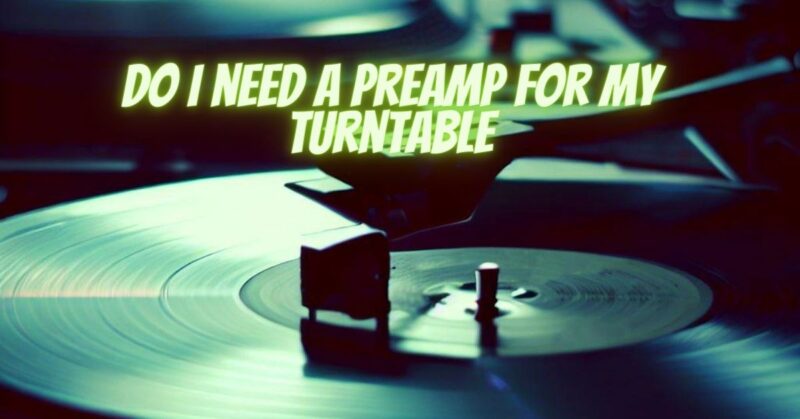When setting up a turntable, one common question that arises is whether a preamp is necessary. A preamp, also known as a preamplifier or phono preamp, is a device that amplifies the low-level signal from a turntable’s cartridge to a line level suitable for amplifiers or receivers. In this article, we will discuss the importance of a preamp, its role in vinyl playback, and factors to consider when deciding if you need one for your turntable setup.
Understanding Preamps: A preamp is a crucial component in a turntable setup. The signal outputted by a turntable’s cartridge is known as a phono-level signal, which is much weaker than the line-level signals used by most audio devices. A preamp’s primary function is to amplify this phono-level signal and apply the necessary equalization (RIAA curve) to restore the proper frequency response of vinyl records during playback. It ensures accurate sound reproduction and compatibility with other audio equipment.
Built-In Preamps: Some turntables come with built-in preamps, commonly referred to as “phono line” or “phono output.” If your turntable has a built-in preamp, it provides the necessary amplification and equalization, allowing you to connect it directly to line-level inputs on amplifiers or receivers without the need for an external preamp.
External Preamps: If your turntable does not have a built-in preamp, you will need an external preamp to amplify and equalize the phono-level signal. External preamps are available in various models and price ranges, offering different features and levels of sound quality. They can be standalone units or integrated into amplifiers or receivers.
Factors to Consider: When determining if you need a preamp for your turntable, consider the following factors:
- Turntable Output: Check if your turntable has a built-in preamp. If it does, you can connect it directly to line-level inputs on amplifiers or receivers without requiring an external preamp.
- Amplifier/Receiver Input: Check if your amplifier or receiver has a dedicated phono input. A phono input includes a built-in preamp, allowing you to connect your turntable directly without needing an external preamp. If your amplifier or receiver lacks a phono input, you will need an external preamp to match the turntable’s signal level.
- Sound Quality: Consider the sound quality you desire. External preamps often offer higher-quality components and better signal processing, leading to improved sound reproduction. If you value high-fidelity audio, investing in a dedicated external preamp can enhance your listening experience.
- Flexibility and Upgradability: Using an external preamp provides flexibility in terms of system configuration and future upgrades. If you plan to upgrade your turntable or audio system, having a separate preamp allows for easy component swapping or upgrading without being limited to the built-in preamp of an amplifier or receiver.
Conclusion:
The need for a preamp in your turntable setup depends on factors such as the presence of a built-in preamp in your turntable, the availability of a phono input on your amplifier or receiver, your desired sound quality, and your future upgradability plans. If your turntable or audio system lacks a built-in preamp or dedicated phono input, an external preamp is necessary to amplify and equalize the phono-level signal. Consider these factors and the specific requirements of your setup to ensure accurate sound reproduction and compatibility with your audio equipment.


